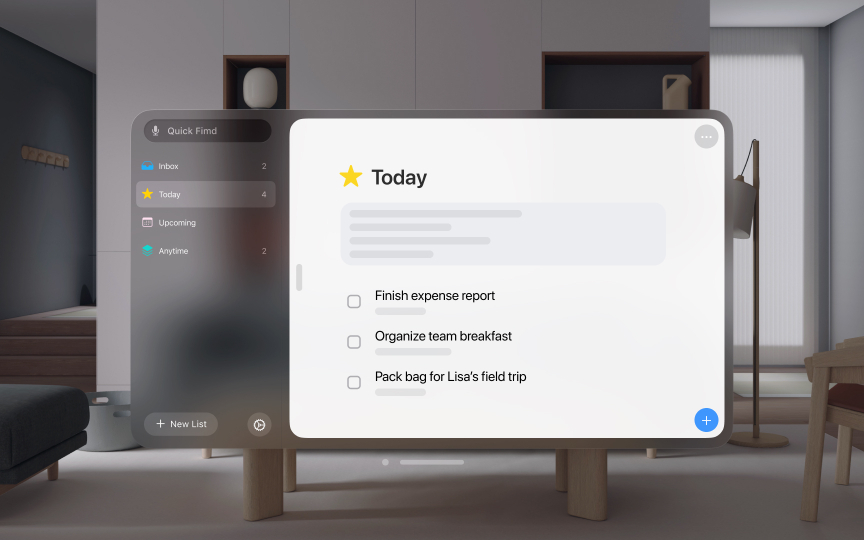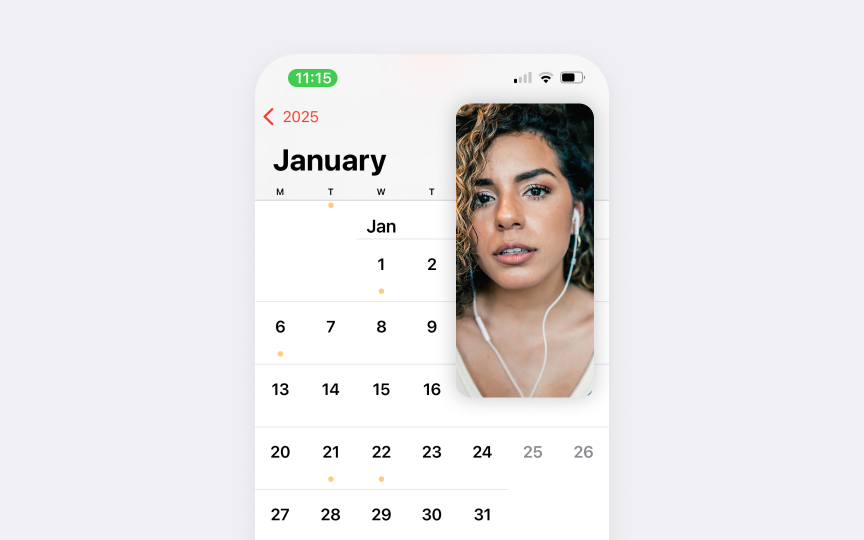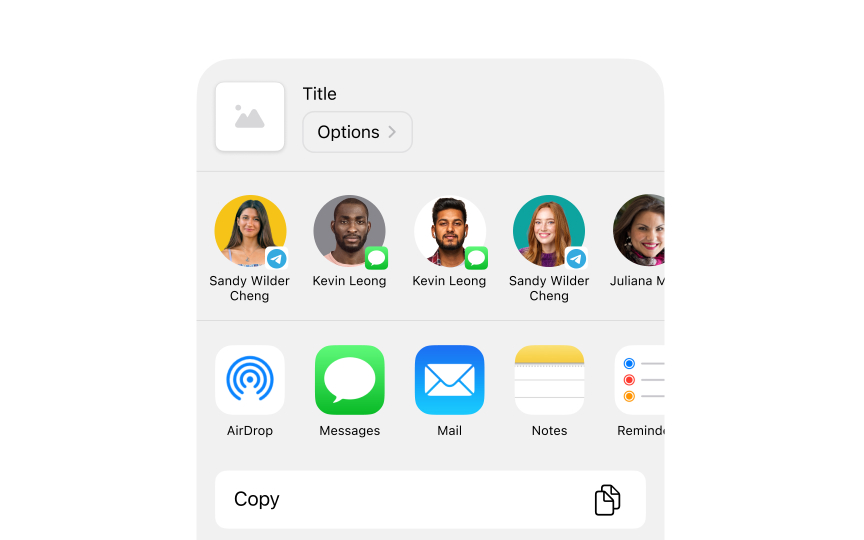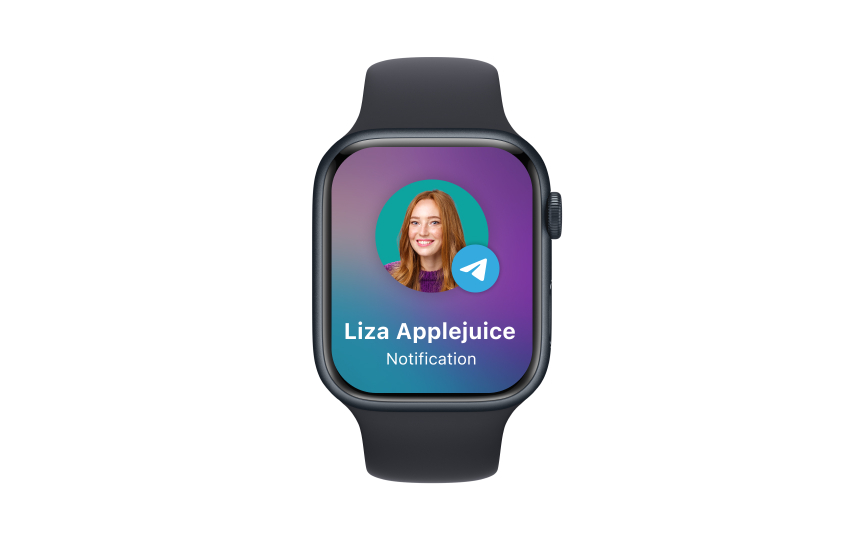Apple Platform-Specific Patterns
Master the distinctive design patterns that make apps feel native on each Apple platform.
Apple's ecosystem consists of distinct platforms — macOS, iOS, iPadOS, tvOS, and watchOS — each designed for specific user needs and contexts. When working on a Mac, users expect detailed interfaces with precise controls and complex workflows. On iPhone and iPad, they prioritize quick, touch-based interactions and focused tasks. Apple TV centers around entertainment with simple navigation for a lean-back experience, while Apple Watch delivers quick information through brief interactions.
These differences emerged from the real usage patterns and technological capabilities of each device. Understanding these platform patterns helps create apps that feel natural. An app that works perfectly for iPhone might feel awkward on Mac if it doesn't adapt to the platform's specific patterns. Each platform has its own way of handling documents, showing menus, organizing navigation, and responding to user input.
These patterns have become familiar to millions of users who rely on them daily. By following platform-specific patterns, apps become more intuitive and trustworthy, helping users feel confident and efficient across all their Apple devices.
Different Apple platforms shape how users work with their devices. Each platform creates a unique environment that makes sense for its context of use.
Platform environments:
- macOS: Works like a desktop workspace where users can see all their open windows at once. Files and folders are easy to find in Finder, and users can work in multiple apps side by side. Most tasks rely on precise mouse clicks and keyboard commands.
- iOS/iPadOS: Centers on one app at a time with smooth switching between apps. Instead of moving files between folders, users share content through a menu that pops up from the bottom. Apps keep their files organized internally.
- visionOS: Creates a spatial computing environment where apps and windows float in the space around users. Content can be placed anywhere in the room, and users interact through eye tracking, hand gestures, and voice. Apps can be as small as a watch face or as large as a wall.
Pro Tip: When switching between platforms, list out the main limitations and advantages of each environment for your specific app.
Some Apple platforms are designed for specific interaction patterns — from quick glances to relaxed browsing. Understanding these patterns helps create more natural experiences.
Platform characteristics:
- watchOS: Built for quick looks and simple actions that take less than 30 seconds. Important info shows right on the watch face through small widgets called complications. Every task is stripped down to its simplest form.
- tvOS: Made for relaxed browsing and viewing from a distance. Everything can be controlled with simple remote clicks, and menus are big and easy to read. The focus is on finding and playing
content .
These different approaches affect how features should work on each platform. A tool that works well for quick glances on a Watch needs different design choices to work well for lean-back TV viewing.
Pro Tip: Time your core features — if they take more than 30 seconds on watchOS or require complex input on tvOS, consider simplifying them.
Different Apple platforms handle document creation, browsing, and management through distinct
Core platform patterns:
- macOS: Centers on robust file system access through Finder and document-based apps. Users expect traditional
menu commands , keyboard shortcuts, and direct file manipulation. - iOS/iPadOS: Emphasizes streamlined document access through the Files app and document-based interfaces. The document launcher provides a consistent, graphical way to browse and create files.
- watchOS/tvOS: Don't provide document creation or browsing interfaces. Users don't typically manage documents on these platforms due to their focused
interaction models. - visionOS: Combines spatial document organization with familiar file system access. Users can work with documents in 3D space while maintaining access to traditional file management through system interfaces.
Pro Tip: Identify your app's primary platforms early to optimize document handling for each platform's native patterns.
Each Apple platform is built around distinct
Core input patterns:
- macOS: Centers on precision pointer control and keyboard shortcuts. Interface elements respond to hover states and exact clicks, enabling complex tasks.
- iOS/iPadOS: Built for direct touch manipulation with large, clear targets. iPadOS extends this with Apple Pencil and trackpad support.
- visionOS: Combines
eye tracking for selection with handgestures for manipulation. Voice input provides additional control options.
Pro Tip: Design interface elements that match each platform's input precision level.
Some Apple platforms require unique
Platform patterns:
- watchOS: Optimized for Digital Crown
navigation and clear touch targets. Screen size shapes input methods while maintaining interaction clarity. - tvOS: Built for remote-based input and distance viewing. Emphasizes focused navigation with clear selection states.
Implementation considerations:
- Design touch targets that remain accessible during movement for watchOS
- Optimize selection paths to minimize remote clicks in tvOS
- Provide clear visual feedback for all input states
- Consider environmental factors like viewing distance and lighting
Pro Tip: Test your interfaces in real contexts — what works at a desk might need rethinking on a wrist or from a couch.
Each Apple platform offers distinct ways to handle multiple windows and tasks, shaping how users work with
Let’s observe platform window patterns:
macOS: Supports natural multitasking with layered windows. Users run multiple apps simultaneously, switching between tasks as they work. Windows show clear visual states through shadows and effects.
iPadOS: Enables structured multitasking through multiple configurations:
- Split View for side-by-side app usage
- Slide Over for quick access to additional apps
- Multiple windows within the same app
- Picture in Picture for video content
visionOS: Allows multiple apps to run in the Shared Space. Windows become active with users' gaze, while inactive windows appear more translucent and recede visually.
iOS: Focuses on Picture in Picture and app switching, letting users watch videos or use FaceTime while working in other apps.
Keep in mind the following platform limitations:
- watchOS supports quick app switching but doesn't allow multiple apps to run simultaneously
- tvOS enables Picture in Picture for supported content while browsing
Apple's ecosystem enables smooth data flow between platforms while respecting each platform's
Sharing patterns:
- macOS: Supports traditional drag-and-drop between windows and apps. Files and
content can be shared through Finder, AirDrop, and system share sheets. - iOS/iPadOS: Uses share sheets as the primary sharing method. AirDrop, Messages, and other services appear in a consistent interface. On iPad, Split View lets users drag images or text between apps side by side.
- visionOS: Combines spatial sharing with familiar iOS-style share sheets. Content can be shared between windows in space or through system-sharing features.
- watchOS: Offers focused sharing options like sending a message, sharing a photo, or responding with a quick reply. The Digital Crown and simple taps provide access to these essential actions.
Each Apple platform handles notifications in ways that match how users interact with their devices and the context of use.
Platform approaches:
- iOS/iPadOS: Shows notifications on the Lock Screen and in the Notification Center. Banners slide down briefly without interrupting tasks. Time-sensitive alerts can appear even in Focus mode.
- macOS: Displays notifications in the Notification Center with banners appearing in the top-right corner. Notifications stay visible longer than on mobile devices, supporting focused work sessions.
- watchOS: Uses subtle haptic feedback with brief visual alerts. Notifications adapt to whether users are actively looking at their watch or need discrete alerts through haptics.
- visionOS: Presents notifications within users’ space. Visual and audio cues maintain awareness without disrupting spatial immersion.
Design considerations:
- Present important information without overwhelming users
- Respect system notification settings and Focus states
- Time notifications appropriately for each platform
Pro Tip: Consider device context when designing notifications — what's appropriate on a Mac might be too intrusive on a watch.
Each Apple platform handles security differently based on its use context while maintaining a consistent foundation of user privacy and data protection.
Security approaches:
- macOS: Controls how apps can access files and features. Each app runs in its own protected space, like a container, that limits what it can do without user permission. Apps need explicit approval to access files, the camera, or other sensitive features.
- iOS/iPadOS: Uses strict app isolation for protection. Each app can only access its own data and must ask users for permission to use features like camera, location, or contacts.
- visionOS: Adds spatial privacy considerations. Apps need permission to scan the room or track hand movements, ensuring users know what apps can see about their space.
- watchOS: Simplifies security through iPhone connection. Apps get their main permissions from paired iPhones while keeping sensitive data protected.
Similar lessons

Login & Signup Flows

User Onboarding























